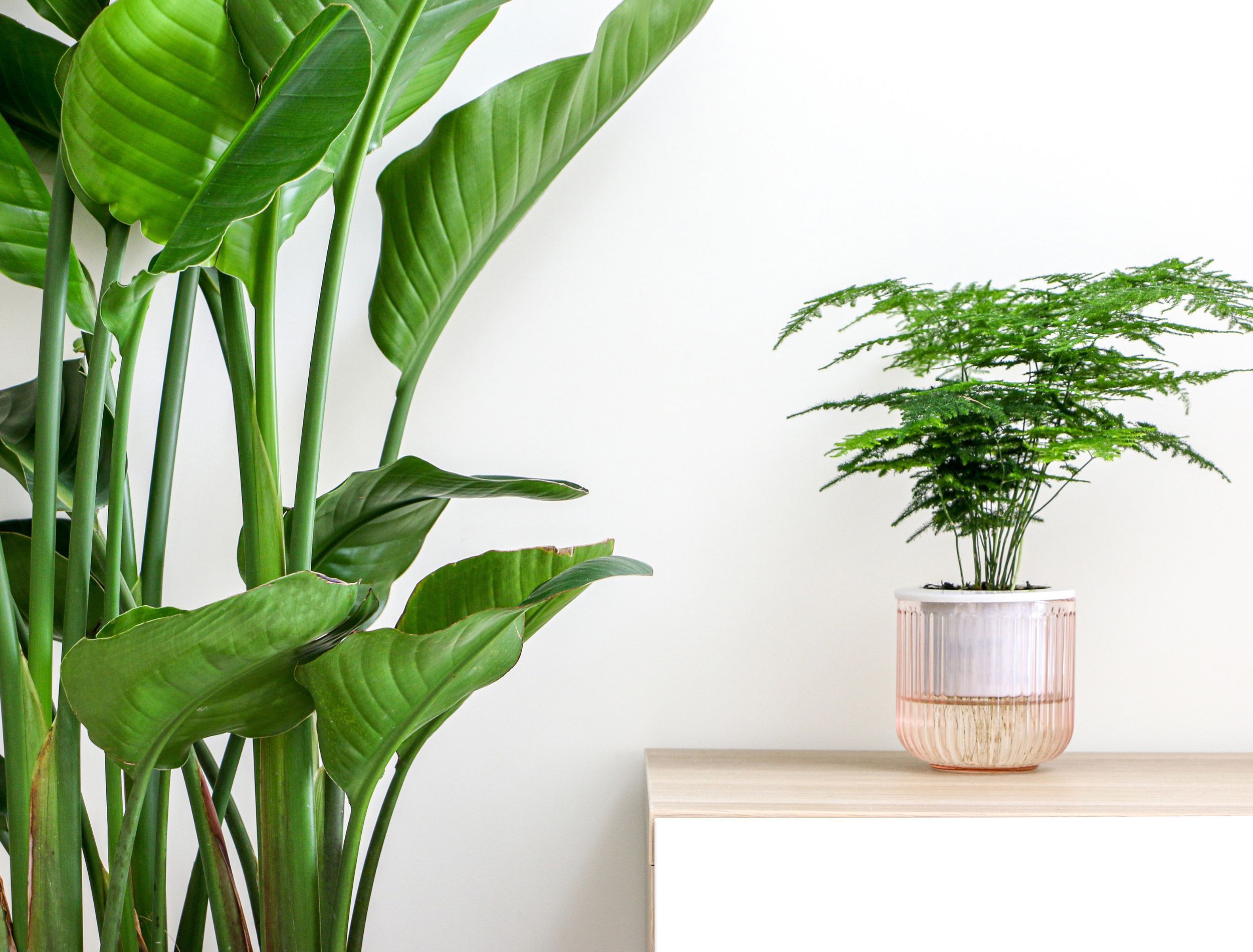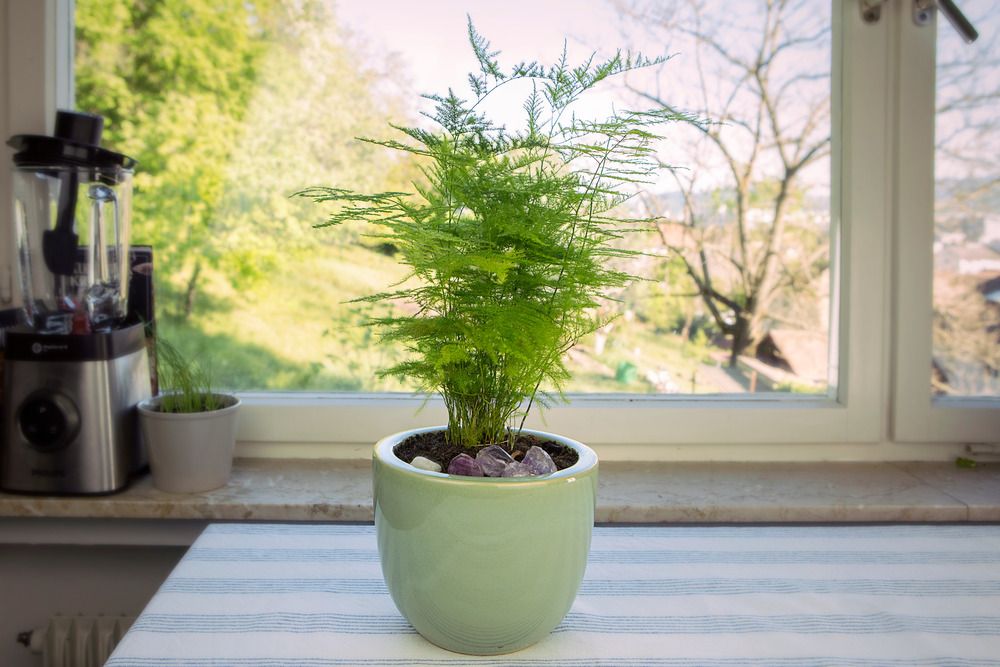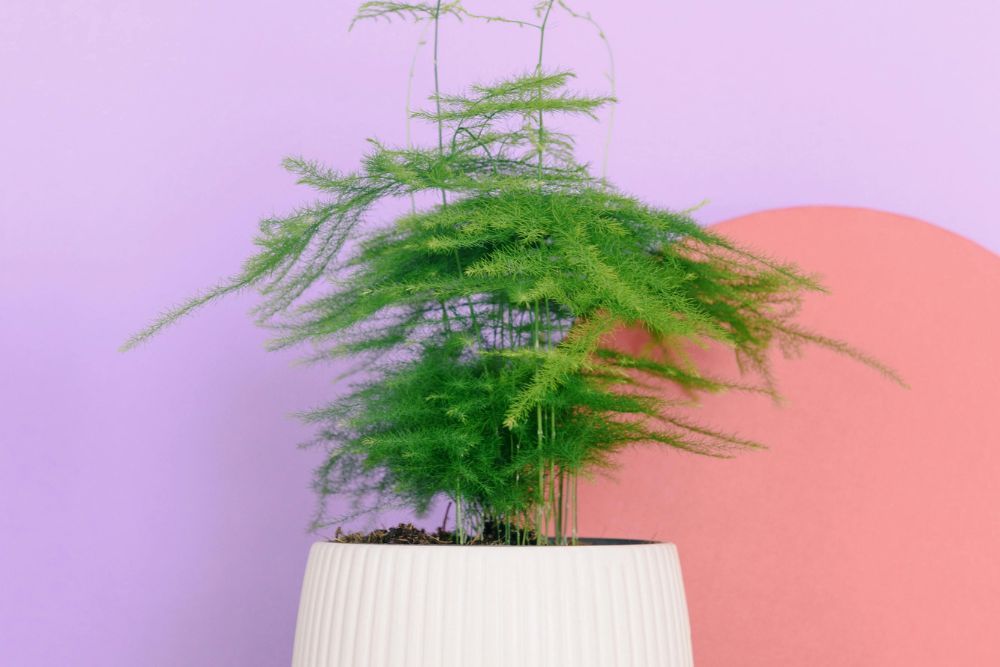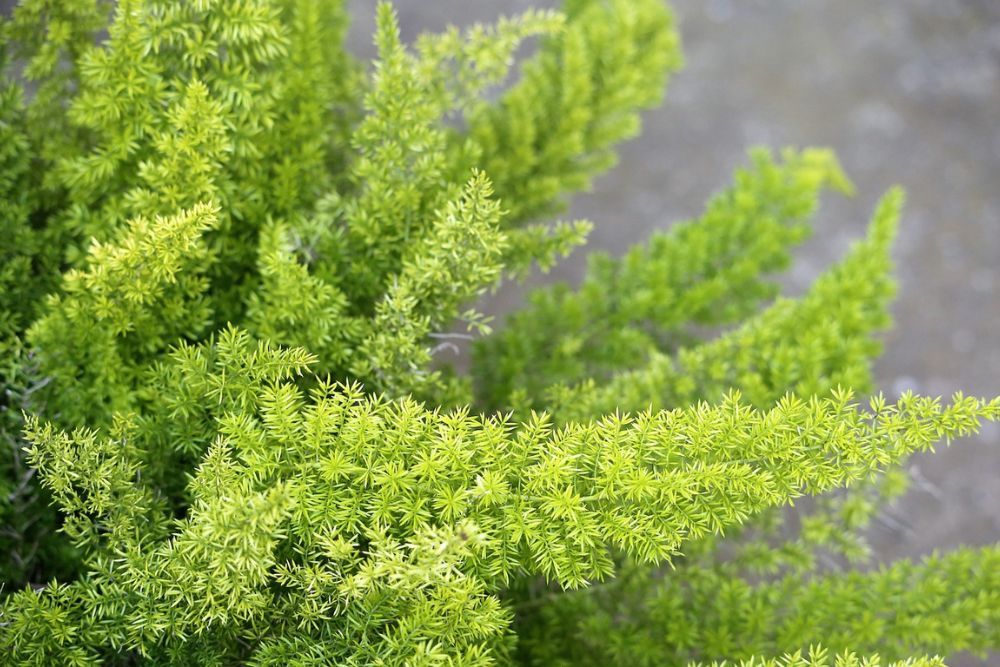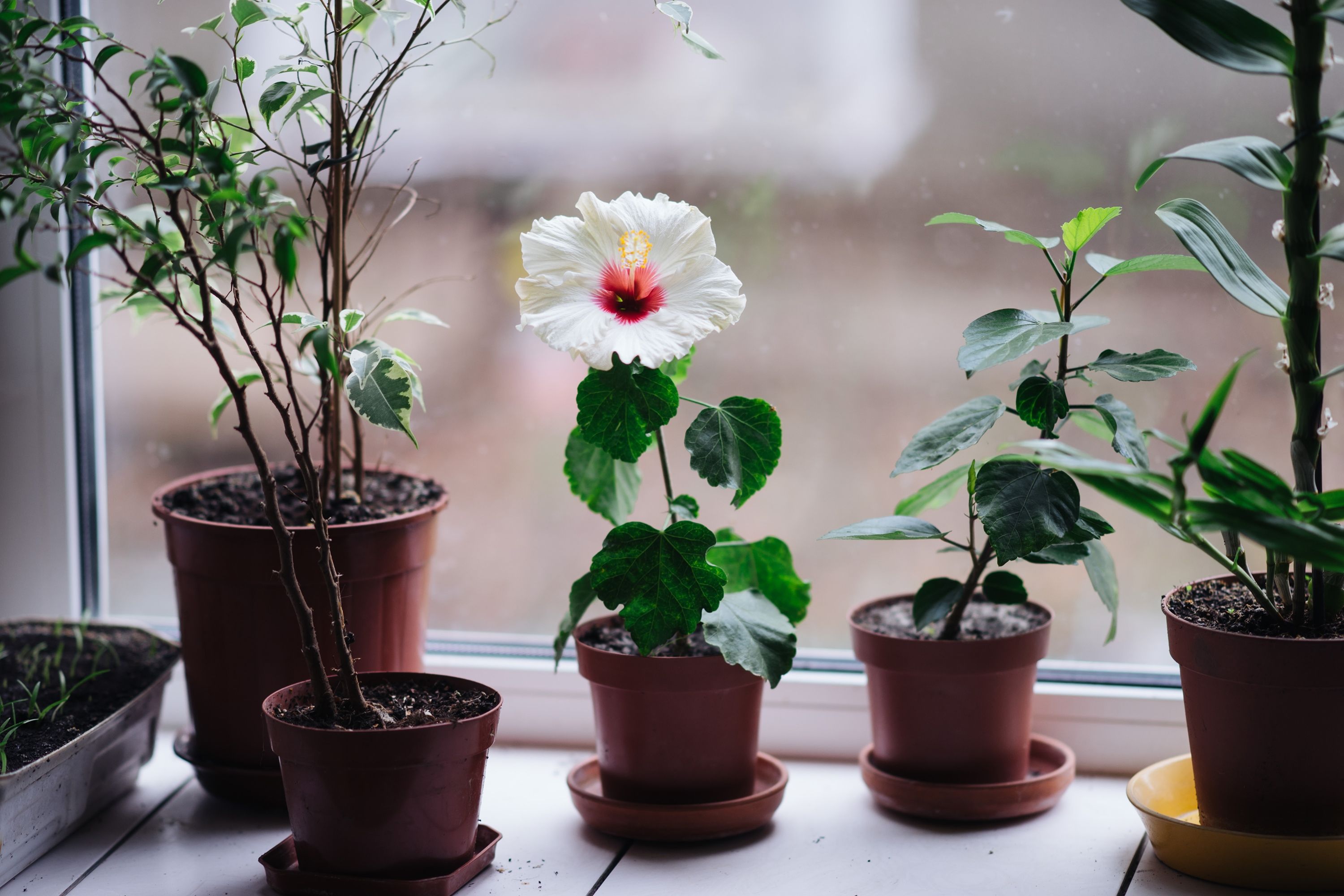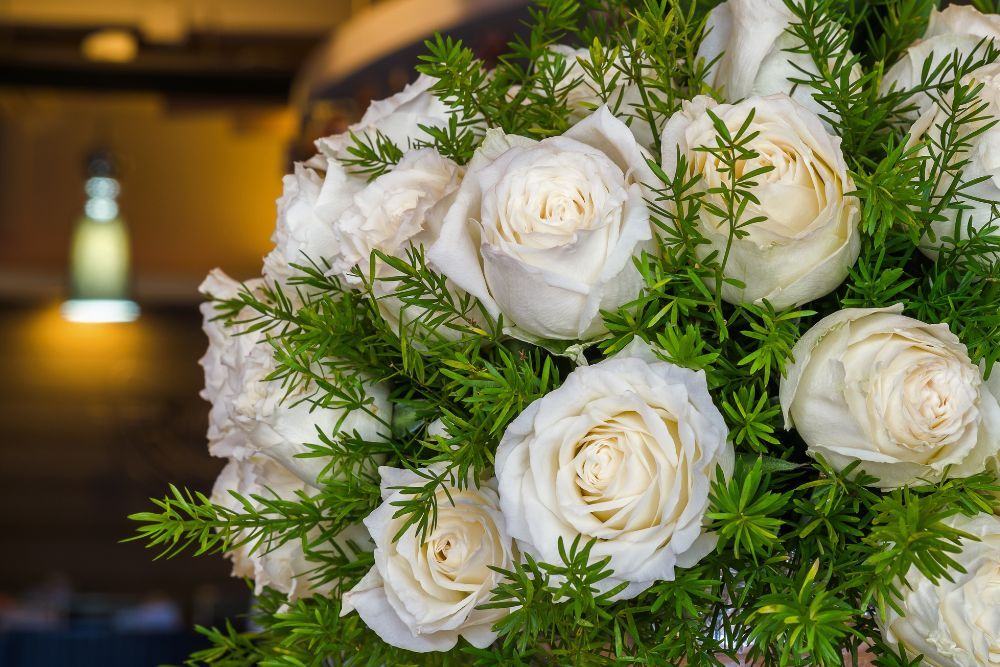Key Takeaways
- Asparagus ferns are excellent at purifying indoor air by removing volatile organic compounds like benzene.
- The elegant feathery foliage of asparagus ferns adds beauty and sophistication to interior decor.
- Asparagus ferns thrive as houseplants when provided with indirect sunlight, moderate humidity, and regular watering. They also pair well with other houseplants and can be used in floral arrangements with roses and carnations.
Asparagus ferns (Asparagus densiflorus) are delicate plants with stunning vivid green foliage. In nature, the asparagus fern is hardy in zones 9 to 11 and flourishes in the coastal regions of South Africa. Although asparagus ferns naturally thrive in warm climates, they are also a trendy choice for indoor gardens and elevate interior home decor.
Cultivating asparagus ferns in your home is an aesthetically pleasing choice with fantastic perks. Discover six benefits of having asparagus ferns in your home!
1 Purify the Air in Your Living Space
They remove volatile organic compounds like benzene from indoor air
According to the University of Georgia, asparagus ferns are fantastic at refreshing indoor air. Out of the 28 common houseplants included in the research, asparagus ferns are one of the top five houseplants that remove toxins and indoor pollutants.
- The air in your home can contain volatile organic compounds (VOCs) that significantly pollute the air.
- VOCs that impact air quality can come from paints or varnishes, clothing, furniture, plastics, and renovation supplies like drywall.
- Asparagus ferns effectively filter VOCs like benzene (paint and cigarette smoke), and toluene (nail polish) from the environment.
As well as asparagus ferns, peace lilies, golden pothos, and snake plants also improve indoor air quality by reducing mold in your home. Mold can cause an array of symptoms like allergies, headaches, and nasal congestion.
2 Uplift Your Home’s Aesthetic
Add elegance with feathery green foliage, little blossoms, and red berries
Asparagus ferns have elegant feathery foliage that creates a beautiful, natural, and eco-friendly accent to your interior decor.
- Although their foliage resembles leaves or needles, they are cladodes. Cladodes are small, flat stems that act like leaves.
- The clusters of four to eight cladodes produce their stunning feathery appearance.
- Asparagus ferns also bloom with petite blush pink, creamy white, or soft yellow 1-inch flowers in spring and summer.
- Then, they grow little ¼ inch burgundy berries to add an extra dash of beauty to your home.
With their delightful appearance, asparagus ferns are a top option for hanging baskets to decorate patios or front porches. Indoors, they make a wonderful coffee table houseplant and happily adapt to humid bathrooms.
According to North Carolina State University the berries, foliage, stems, and roots are toxic to humans, cats, dogs, and horses. Keep pets and children away. Contact a medical professional if ingestion or skin irritation occurs.
3 Curate a Collection With Elegant Cultivars
Look for 'Meyersii' foxtail asparagus ferns or 'Sprengeri' ferns
When you cultivate asparagus ferns, you don't have to settle for just one cultivar. Expand your houseplant collection with the trendiest types of asparagus ferns for houseplants.
- The foxtail asparagus fern (Asparagus densiflorus 'Meyersii') is a bushy type of asparagus fern. Asparagus foxtail ferns have lush, arching branches that cascade over the edges of pots, hanging baskets, or containers, and can reach up to 3 feet.
- 'Sprengeri' asparagus fern (Asparagus densiflorus 'Sprengeri') grows into a stunning round shape that fills containers with luxurious greenery and spreads up to 4 feet. When handling 'Sprengeri' asparagus ferns remember to wear gardening gloves because their leaflets feel prickly as they age.
- 'Cwebe' asparagus ferns (Asparagus densiflorus 'Cwebe') offer contrast to a fern collection, with stems that stand upright and feature foliage with warm hazel and copper tones.
4 Asparagus Ferns Thrive As Houseplants
Provide indirect light and water when the top inch of soil feels dry
Another top benefit of cultivating asparagus ferns as houseplants is that they adapt well to indoor environments. Asparagus fern care isn't complex either! By following a few plant care essentials, you can encourage healthy growth.
|
Sun preferences |
Asparagus ferns tolerate shade, with two hours of sunlight or less. However, the University of Wisconsin-Madison suggests that exposure to indirect sunlight encourages swift growth. |
|
Artificial light |
If you don't have a spot that gets sufficient sunlight, supplement lighting. Place your asparagus fern 8 to 12 inches beneath grow lights for 14 to 16 hours each day. |
|
Humidity |
They love it when the humidity is 40 percent or higher indoors. Improve humidity by using a humidifier. You can also put the pot on top of a tray of pebbles and water to boost humidity around your fern. |
|
Ideal temperatures |
Asparagus ferns typically prefer warm temperatures between 65 and 75 degrees Fahrenheit. Then, they tolerate temperatures as low as 50 degrees Fahrenheit in winter. |
|
Watering |
Asparagus ferns require regular watering. Irrigate the soil until it is thoroughly moist, and don't let it dry out in between waterings. Water when the top 1 to 2 inches of soil feels dry. |
Taking time to look after your asparagus fern will help it stay healthy and vibrant, so you can continue to enjoy its wonderful benefits.
Signs of a lack of water in asparagus plants include droopy, yellow, or brown foliage that falls off the plant.
5 Beautifully Complement Your Indoor Garden
Cultivate with elephant ears, canna lilies, or hibiscus plants
Asparagus ferns look spectacular when you pair them with plants that have contrasting leaf shapes for a tropical aesthetic.
- Elephant ears have large stately foliage that grows 3 feet long. They also prefer temperatures above 50 degrees Fahrenheit and enjoy humidity.
- Canna lilies showcase vivid red, opulent orange, and golden yellow 4-inch flowers that offer a stunning contrast against the green foliage of asparagus ferns.
- Hibiscus adores balmy temperatures of 65 to 75 degrees Fahrenheit, just like asparagus ferns. Plus, their bold blooms add a cheerful pop of color to luscious green ferns in planters.
6 Design Fantastic Floral Arrangements
Include roses, canna lilies, or carnations for a bright bouquet
The dainty appearance of asparagus ferns makes them a cheerful choice for floral arrangements! Complement their brilliant fluffy leaves with flowers from a backyard cutting flower garden.
Flowers that pair well with asparagus ferns include:
- Classic white or ruby red roses, that boldly contrast the soft green tones of asparagus fern sprigs.
- Clusters of canna lilies with striking citrus orange hues or crimson red petals, cut at varying heights to add depth to your bouquet.
- Infuse your arrangement with sophistication and enchanting floral fragrances, by including delicate carnation blooms in pastel purple, snowy white, and pretty pink.
Then, tie the aesthetic of your room together by tucking them in a glass vase on a nightstand, as a centerpiece in your dining room, or as an accent to a coffee table.
Asparagus ferns have a wide range of wonderful benefits that make them a top choice for indoor gardening.
- They act as natural air purifiers by filtering out harmful VOCs circulating in the air in your home like benzene and toluene.
- There is a selection of cultivars to choose from, such as 'Meyersii' or foxtail asparagus ferns with cascading foliage, 'Sprengeri' that grows into a round shape, and 'Cwebe' that contrasts the typical green stems with rusty or coppery tones.
- Asparagus ferns thrive in indoor gardens when you provide them with warm temperatures around 65 to 75 degrees Fahrenheit, moderate humidity of at least 40 percent, and irrigate the soil when you feel that the top inch is dry.
- They complement houseplants like elephant ears and hibiscus and also make a wonderful addition to floral arrangements alongside roses and carnations.
After starting your indoor gardening journey and planting a luscious asparagus fern, share the amazing perks and plant care tips with your friends and family, so they can cultivate a flourishing indoor garden as well!

